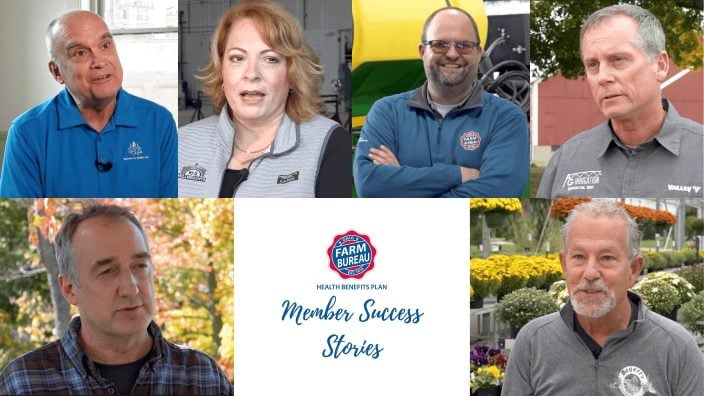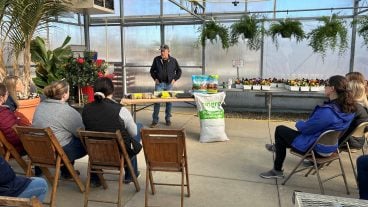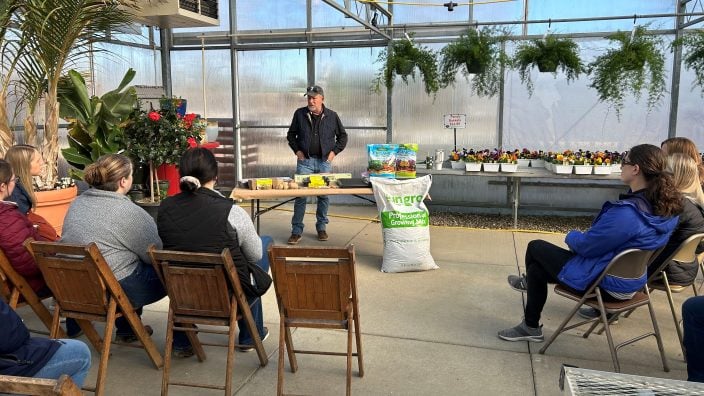Farmer’s Guide to Trucking Regulations available to Ohio Farm Bureau members
The guide includes a farm driver checklist, overview of state and federal regulations and exemptions, CDL qualifications and more.
Read More
Garlic from China? My husband happened to look at the package of garlic I recently purchased at a local grocery store and pointed out that yes, the garlic was imported from China. Really?
Actually, 23% of U.S.-consumed garlic is grown in China. Farmers in the U.S. grow 24,000 acres each year producing about 400 million pounds. You would think that is enough, but with the average American consuming two pounds of garlic per year, we need more. So we get it from China, Argentina and Mexico.
I’ve been wondering what other foods we import from China. My search kept coming back to garlic and several other products. 90% of vitamin C, 78% of tilapia, 70% of apple juice, 50% of cod and 43% of processed mushrooms consumed by Americans comes from China.
I do not consider myself an alarmist, but I am greatly concerned about the food products we buy from China. I also believe that just because you can find it on the internet doesn’t mean that it is true.
There has been repeated evidence over the years that China manufacturers need to make food safety a priority. Evidence shows they often cut corners, substitute dangerous ingredients and compromise safety to boost sales. Thank you to our elected officials and agencies who are working hard to hold China accountable.
Agricultural trade with China is huge, but it is a big deal with Canada and Mexico, too. Canada’s imports to the U.S. include snack foods, red meats, other vegetable oils, and processed and fresh fruits and vegetables totaling $23 billion in 2018.
Food-related imports from Mexico totaled $26 billion in 2018, with fresh fruit topping the list, followed by wine and beer, snack foods, and processed fruits and vegetables.
The North America Free Trade Agreement was an agreement between the U.S., Mexico and Canada designed to expand trade and make each of these countries more competitive in the global marketplace. This agreement went into effect in January 1994, and most agree it was needed and accomplished its goals.
Fast forward 24 years to Sept. 30, 2018, when the three countries reached a deal to replace NAFTA with a trade agreement that would bring North American trade into the 21st century. It pays particular attention to digital trade, agriculture, state-owned enterprises, and labor and the environment.
Canada and Mexico are our closest partners and the “new NAFTA,” a.k.a. United States-Mexico-Canada Agreement (USMCA), preserves and strengthens America’s strong trade ties with Mexico and Canada.
When I traveled to Washington, D.C., in March with Ohio Farm Bureau members, legislators told us that it was a good bipartisan agreement and was ready to be ratified by each country. Mexico did this June 19. Congress announced an agreement on Tuesday. We are still waiting for the officials of Canada to do the same.
I can’t end this discussion without giving a shout out to all the American farmers. They produce quality and quantity, competing in local, national and global markets while facing unique challenges: high degrees of regulations and significantly higher costs of production compared to the rest of the world, expectation that all agricultural practices should have a zero impact on the environment and the ever-increasing societal pressure to produce their food the way they want it produced and yet be low cost.
Every country has its strengths when it comes to food production. Its climate, terrain and soils often dictate what a country can and cannot produce. Trade agreements help farmers grow what they grow best. Export your excess to others that need it and import what your country needs.
Trade agreements used correctly can level the playing field in today’s world economy. Supply and demand in a global market can only go so far when it comes to balancing the above mentioned unique challenges. Trade agreements can also help protect us from unsafe food products.
Submitted by Mary Smallsreed, a member of the Trumbull County Farm Bureau, who grew up on a family dairy farm in northeast Ohio.
OFBF Mission: Working together for Ohio farmers to advance agriculture and strengthen our communities.


The guide includes a farm driver checklist, overview of state and federal regulations and exemptions, CDL qualifications and more.
Read More


Katie Share of Columbus has been named ExploreAg and Youth Development Specialist for Ohio Farm Bureau.
Read More

Mary Klopfenstein of Delphos has been named Young Ag Professional and Ag Literacy Program Specialist for Ohio Farm Bureau.
Read More

The plan has been updated to give sole proprietors access to more rate stability and a smart solution that offers potential savings on health care.
Read More

The American Farm Bureau Federation, in partnership with Farm Credit, is seeking entrepreneurs to apply online by June 15 for the 2025 Farm Bureau Ag Innovation Challenge.
Read More

Adele Flynn of Wellington has been elected treasurer of the Ohio Farm Bureau Federation and now holds the third highest elected office in Ohio’s largest and most influential farm organization.
Read More

Producers are urged to work with their veterinarian to practice enhanced biosecurity measures and review and limit cattle movements within production systems.
Read More

The changing seasons bring with them the need to thoroughly inspect pole barns for any damages that may have occurred during the winter months.
Read More

Hundreds of Ohio businesses and sole proprietors are raving about Ohio Farm Bureau’s Health Benefits plan with lower, predictable costs and easy enrollment and administration options.
Read More

AgriPOWER Class XIV spent a few days in March in Medina and Wayne counties learning more about northern Ohio agriculture from leaders in Ohio Farm Bureau.
Read More